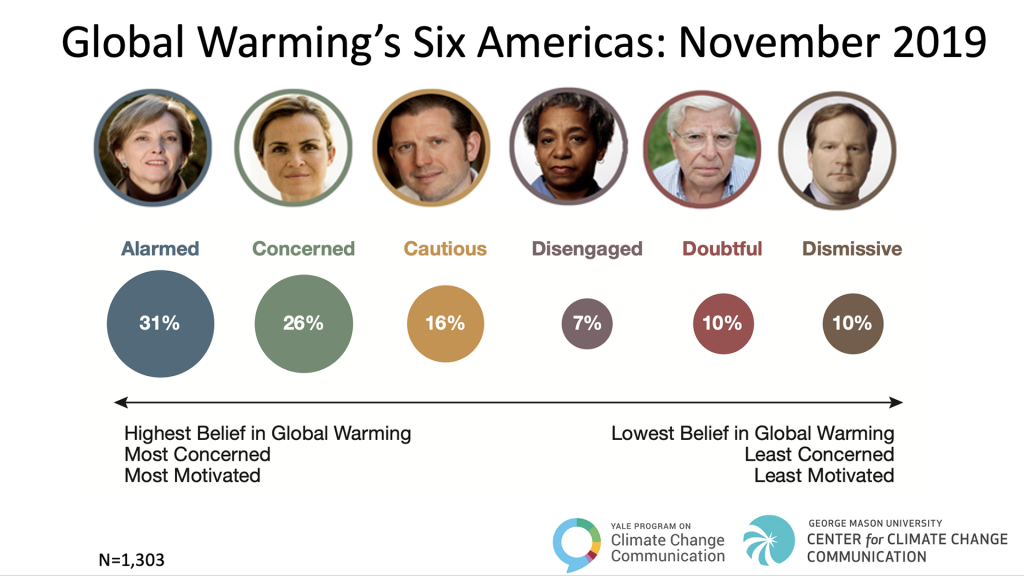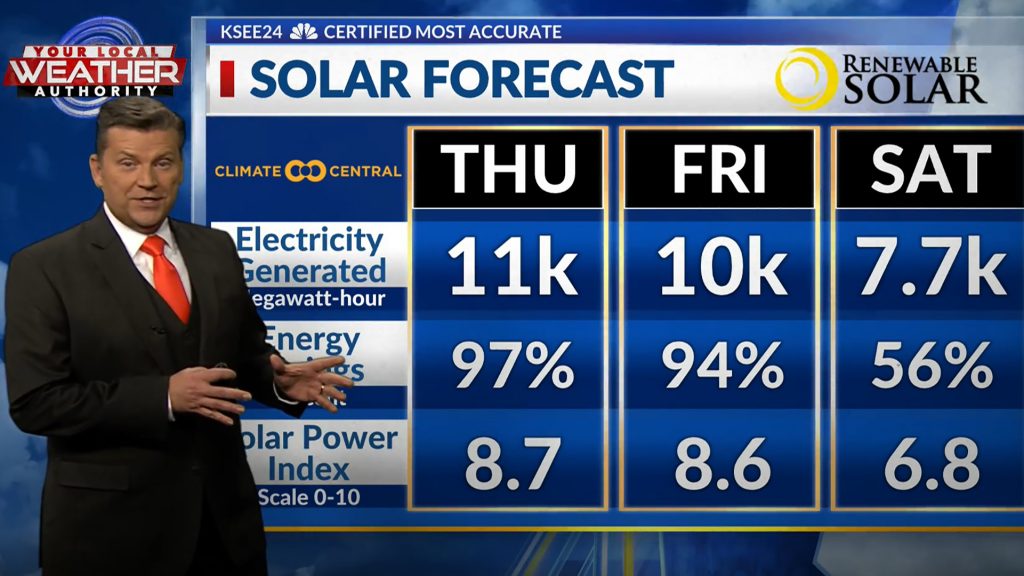
Editor’s Note: Before joining the Local Media Association last fall, Frank Mungeam was part of our team as Knight Professor of Practice in TV News Innovation here at the Cronkite School. With this post, we welcome Frank back as a Guest Contributor.
The U.S. rejoined the Paris Climate Accord on the first day of the new Biden administration. There’s now a cabinet-level position focused on climate change. A week later, General Motors stunned the auto industry by announcing its goal to sell only zero-emission cars and trucks within 15 years. The problem of global warming is ‘cool’ again.
It’s why Local Media Association this month launched a nationwide Covering Climate Collaborative and is inviting local newsrooms to join. The time for journalists to focus on climate change at the local level is now; and collaboration is the best way to do it. Here are three reasons why.
Your Audience Wants Climate Reporting
Public attitudes on climate change have shifted dramatically in just the past five years. Don’t let that predictable “Fake News!” comment on your news station’s Facebook page mislead you or deter coverage. Nearly two-thirds of Americans now report being concerned (28%) or outright alarmed (31%) about climate change; while the minority of doubters (10%) and outright deniers (10%) continues to shrink.

As I’ve noted previously for the Knight Cronkite News Lab, news reporting on climate change has indeed been increasing in recent years; but consumption of climate news has gone up even more, according to Chartbeat data. Even during the peak of pandemic coverage, when climate reporting ebbed, interest remained. Meanwhile, news consumers report not seeing much climate coverage. In the latest Yale Climate Opinion Map, only one in four respondents said they saw climate covered in the media in the past week. The bottom line: The audience interest in climate reporting exceeds the current level of coverage.
News consumers also want more than just ‘problem reporting.’ Increasingly, audiences are seeking reporting that empowers them to take meaningful action. They want to know what they can DO. A 2020 Google study found this was especially true of Gen Z. These young news consumers said they wanted “more information about how to get involved and take action” on issues reported in the news. It’s why the Solutions Journalism Network is one of the partners in LMA’s Covering Climate Collaborative. The message from our audience is clear: report on what’s working and ways to get involved.
Better Together: A Story Bigger Than Any of Us
When it comes to this planet-sized story, there’s strength in numbers. No single newsroom is likely able to go it alone. Most journalists are not scientists and either hate — or convincingly pretend to hate — math. That’s why newsrooms need partners who are experts in science and the specific skills of climate journalism. LMA is partnering in its climate collaborative with a range of experts in the Climate Matters in the Newsroom coalition: the team at George Mason University’s Center for Climate Change Communication brings crucial research and opinion data; Climate Matters supplies newsrooms with free localizable data visualizations, regionally relevant story leads, and a remarkable archive of the best in local climate reporting; and members of the Society of Environmental Journalists are the specialists in the field. Among the other contributors are NASA and NOAA.

There’s another way in which newsrooms can be better, together, in covering climate. In this digitally disrupted news environment, our audiences are now spread across many platforms and media preferences. For Gen Z, that’s even more pronounced, where research shows social media is their leading pathway to news. Local newsrooms that care about reaching audiences where they are — and achieving impact with their reporting — will accomplish more by joining forces with complimentary news organizations to bridge platform and audience gaps. Our LMA collaborative will seek a mix of platform partners in each region to combine the best of print, digital, broadcast, social and audio storytelling.
LMA is also working with technology companies on tools we can share with participating local newsrooms that will empower their local audiences to take meaningful action. Product innovation isn’t a strong suit for many media companies. With the collaboration of technology partners, we intend to build and test engagement tools that will connect local audiences with meaningful and measurable actions people can take.
Think Globally. Report Locally
Climate change as a subject is too big and too complex for any one local news outlet. And yet, we each experience its effects — and can take personal, meaningful action — at the local level, in our own communities.
Two years ago, I wrote a prediction for the ‘future of news’ published by the Nieman Lab on why local TV was unusually well-positioned to lead on local climate reporting. Those arguments are even more true today. Think about the assets a local broadcaster already has:
- A ‘chief science officer’ in the form of the station meteorologist, someone truly trained in and knowledgeable about the science
- Trust and recognition: the TV meteorologist is often one of the most recognized and most trusted local news personalities
- The tools and technology to visualize complex climate stories: the weather center is, in most newsrooms, a best-in-class graphics system. This is a huge ‘running start’ for newsrooms looking to visualize complex climate stories
- Local audience reach: despite all the challenges facing the news business, local broadcasters still have strong and loyal audiences, and this reach enables impact
If any broadcaster needs further motivation to leverage its weather expertise for climate coverage, consider this. Other than extreme weather events, most of the traditional core of the daily weather forecast — from highs and lows to bus-stop forecasts to the weekend or seven-day outlook — are now more easily available on demand on a smartphone, with the added bonus of being location-specific. Climate reporting is a way for newsrooms to leverage their existing weather brand while future-proofing against competition from apps.
Oh, and one more thing: Going green in coverage could also mean more green for the broadcast business. The Knight-Cronkite News Lab previously covered how WRC-TV gained sponsorship for its climate campaign; and other newsrooms have begun selling sponsored solar forecasts. Recent shifts in U.S. national policy and announcements like General Motors’ zero-emissions goal are signals that there’s an opportunity to build new revenue streams around climate coverage.

In my two years working on TV news innovation at the Knight-Cronkite News Lab at ASU, I had the opportunity to meet and get to know many of the smart, innovative, dedicated folks working on climate coverage. In my new role as Chief Innovation Officer at Local Media Association, I’m delighted that many of these same thought leaders have committed to work together and help each other as partners in the Covering Climate Collaborative. We’re looking for 25 newsrooms committed to this kind of coverage, and to the ‘better together’ spirit of collaboration. It’s the only planet we have.
You can read more here about the LMA Covering Climate Collaborative. Local newsrooms interested in joining can apply here. Deadline is February 28.